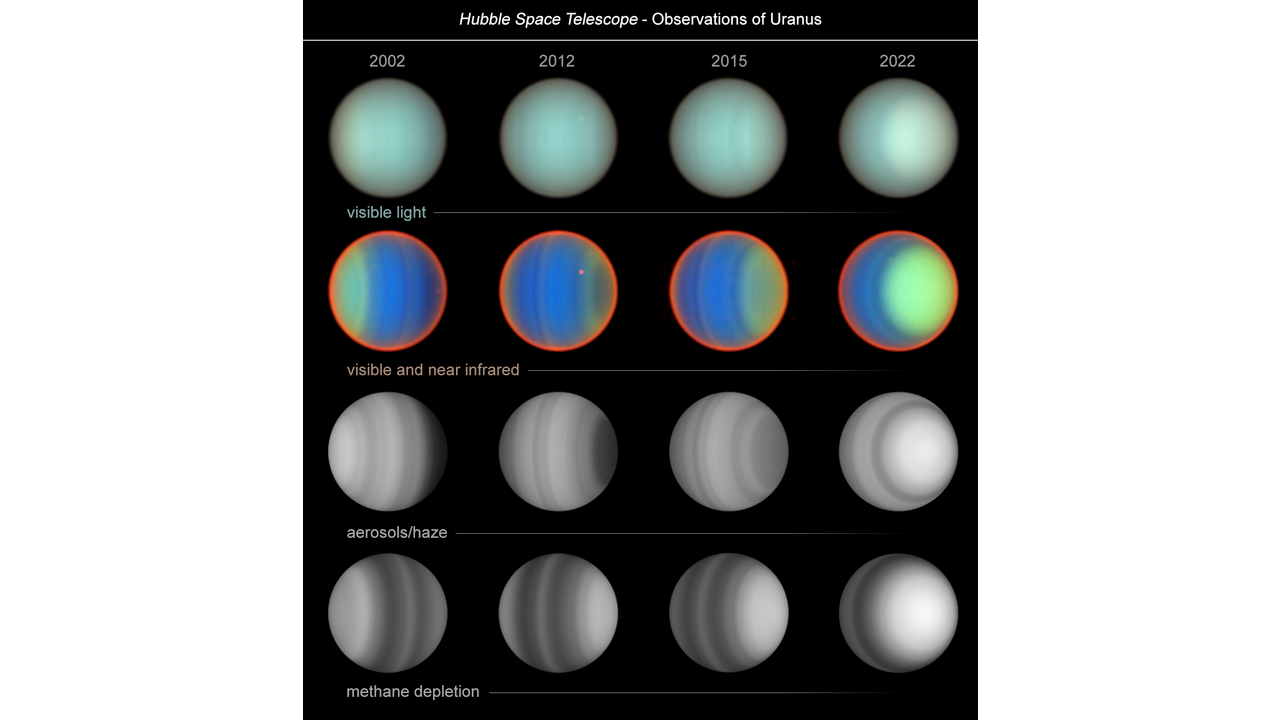Uranus has not had a whole lot of love from NASA and has been explored by a probe only once. Voyager 2 sent back spectacular pictures of the ice giant, resembling a perfect blue ball in space.
But the Hubble Space Telescope has been keeping a close eye on the planet, imaging Uranus regularly as it moves through the Solar System on its 84 (Earth) year orbit. Using data from the telescope collected between 2002 and 2022, including that from the Space Telescope Imaging Spectrograph (STIS) instrument, scientists have put together a new picture of the complex atmosphere of the planet as it moves ever so slowly through the seasons.
“Uranus is the only planet whose equator is nearly at a right angle to its orbit, with a tilt of 97.77 degrees. This may be the result of a collision with an Earth-sized object long ago,” NASA explains. “This unique tilt causes Uranus to have the most extreme seasons in the solar system. For nearly a quarter of each Uranian year, the Sun shines directly over each pole, plunging the other half of the planet into a 21-year-long, dark winter.”
Astronomers are interested in how this tilt affects the atmosphere of Uranus, as well as how the atmosphere works there in general. Mainly comprised of hydrogen and helium, as well as methane, and traces of water and ammonia, it is the red-absorbing methane that gives the planet its distinct teal color.

Green areas generally indicate less methane than blue areas, while red areas indicate no methane.
Image credit: Space Telescope Science Instrument
Looking at the four observations of the planet by Hubble over the 20-year period, the team found that the gas was not uniformly distributed across the planet, as it is on gas giants Jupiter and Saturn. During this time, which has mostly been spring for the north of the planet, methane has remained strongly depleted at the poles. But the telescope did catch the aerosol and haze structure changing on the planet, brightening in the north as that half of the planet approaches the summer solstice in 2030. At this point, due to Uranus’s unusual tilt, the Sun will be almost directly above the planet’s north pole.
“At middle and low latitudes, aerosols and methane depletion have their own latitudinal structure that mostly did not change much over the two decades of observation. However, in the polar regions, aerosols and methane depletion behave very differently,” the Space Telescope Science Institute explained in a statement.
“In the third row, the aerosols near the north pole display a dramatic increase, showing up as very dark during early northern spring, turning very bright in recent years. Aerosols also seem to disappear at the left limb as the solar radiation disappeared. This is evidence that solar radiation changes the aerosol haze in the atmosphere of Uranus.”
Observations of Uranus will continue as the seasons change on the planet.
Source Link: Complex Patterns Of Volatile Gas Found Circulating Around Uranus